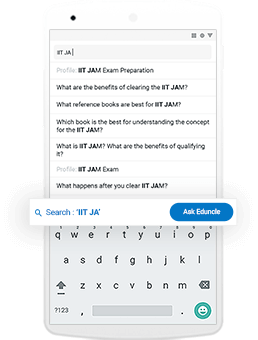Time management is very much important in IIT JAM. The eduncle test series for IIT JAM Mathematical Statistics helped me a lot in this portion. I am very thankful to the test series I bought from eduncle.
Nilanjan Bhowmick AIR 3, CSIR NET (Earth Science)
B
Bishal Paul posted an Question
April 25, 2021 • 20:57 pm
![]() 30 points
30 points
- CSIR NET
- Life Sciences
Explain the beta sheet of protein structure with diagram and also let me know from which book this alpha helix diagram is taken
1 Answer(s)
Answer Now
- 0 Likes
- 1 Comments
- 0 Shares
-
![comment-profile-img]() >
>
T
Do You Want Better RANK in Your Exam?
Start Your Preparations with Eduncle’s FREE Study Material
- Updated Syllabus, Paper Pattern & Full Exam Details
- Sample Theory of Most Important Topic
- Model Test Paper with Detailed Solutions
- Last 5 Years Question Papers & Answers
Sign Up to Download FREE Study Material Worth Rs. 500/-










 >
>







Krishan k jakhad![best-answer]()
beta Sheet ...In 1951, Pauling and Corey predicted a second type of repetitive structure, the conformation. This is a more extended conformation of polypeptide chains, and its structure is again defined by backbone atoms arranged according to a characteristic set of dihedral angles. In this conformation, the backbone of the polypeptide chain is extended into a zigzag rather than helical structure. The arrangement of several segments side by side, all of which are in the conformation, is called a beta sheet. The zigzag structure of the individual polypeptide segments gives rise to a pleated appearance of the overall sheet. Hydrogen bonds form between adjacent segments of polypeptide chain within the sheet. The individual segments that form a sheet are usually nearby on the polypeptide chain but can also be quite distant from each other in the linear sequence of the polypeptide; they may even be in different polypeptide chains. The R groups of adjacent amino acids protrude from the zigzag str. The adjacent polypeptide chains in a sheet can be either parallel or antiparallel (having the same or opposite amino-to-carboxyl orientations, respectively). The structures are somewhat similar, although the repeat period is shorter for the parallel conformation (6.5 Å, vs. 7 Å for antiparallel) and the hydrogen-bonding patterns are different. The interstrand hydrogen bonds are essentially in-line in the antiparallel sheet, whereas they are distorted or not in-line for the parallel variant. you may get better details of these conformations in Biochemistry by Lehninger..